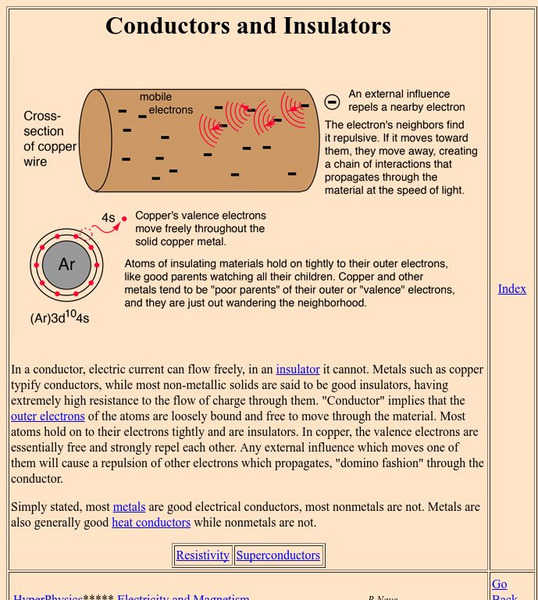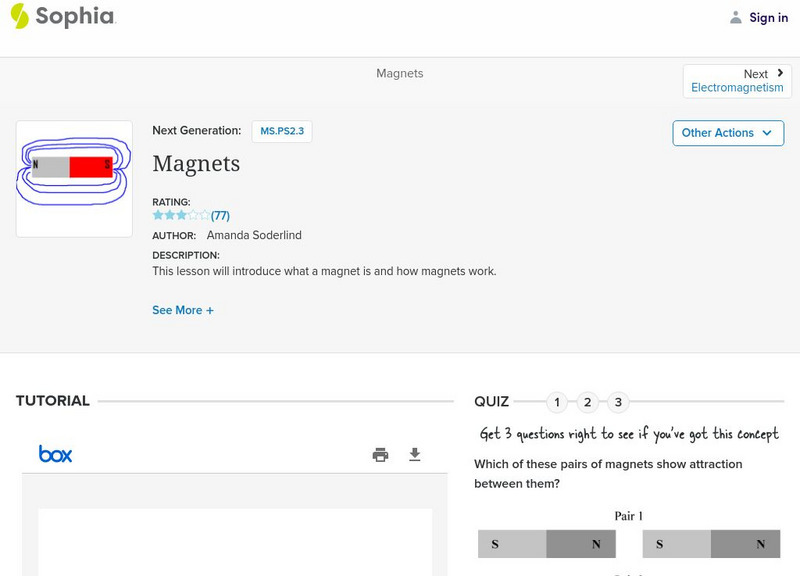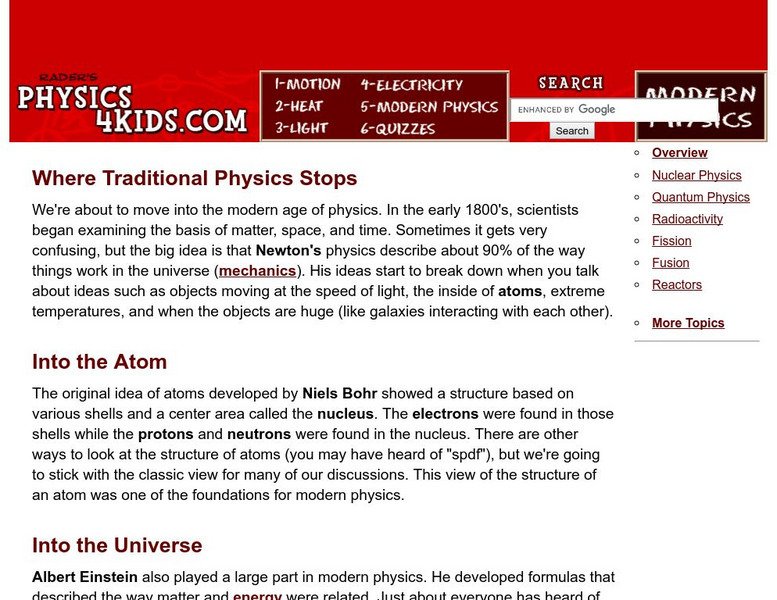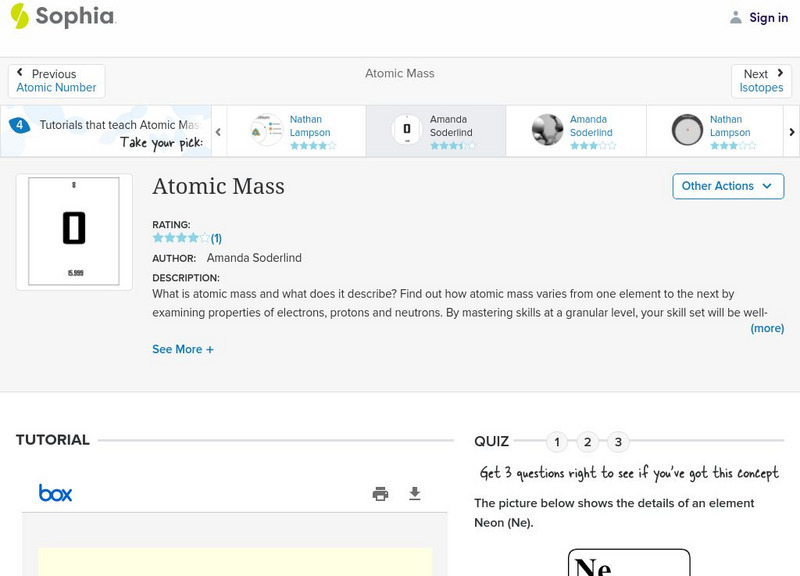Khan Academy
Khan Academy: Electronic Structure Questions
Practice for the MCAT with these electronic structure questions.
Khan Academy
Khan Academy: Physical Processes: Electronic Structure: Electron Configurations Article
Electron configurations are a simple way of writing down the locations of all of the electrons in an atom. This article describes how this works.
Concord Consortium
Concord Consortium: What Makes Water Special?
Students will develop explanations connecting observations of water with properties that water exhibits through the following activities. Activity 1 How are water and other liquids similar? Activity 2 Why is water different from other...
Georgia State University
Georgia State University: Hyper Physics: Conductors and Insulators
This site from Georgia State University provides information on the distinction between conductors and insulators. Factors contributing to the insulating ability of materials are discussed.
Exploratorium
Exploratorium: Remote Control Roller
Students can make a empty soda can roll with an electrically charged balloon.
Lawrence Berkeley National Laboratory
Berkeley Lab: Basic Nuclear Science Information
Site provides the ABC's of nuclear science including radioactivity and gamma decay to fission and comic rays.
Wolfram Research
Wolfram Science World: Quantum Electrodynamics
In its description of quantum electrodynamics this definition provides the governing equations.
University of Guelph
The Carbon Family: Electron Binding Energies
A very advanced site on the elements of the Carbon Family. This site describes the electron binding energies of each in a detailed graph.
Simon Fraser University
Chem1 Virtual Textbook: Electrons
Acting as part of an overview on quantum theory, this section of the site deals with questions related to electrons, such as "If the electron cannot be localized, can it be moving?" and "Why does the electron not fall into the nucleus?"
Simon Fraser University
Chem1 Virtual Textbook: Particles and Waves
Acting as a subtopic of the General Chemistry Virtual Textbook's section on Atoms and the Periodic Table, this site discusses wavelength and the uncertainty principle. Information is also provided on de Broglie wavelength and electron...
Thomas Jefferson National Accelerator Facility
Jefferson Lab: All About Atoms
The three basic particles that make up atoms are defined and illustrated.
NASA
Nasa: La Exploracion De La Magnetosfera Terrestre
This site is a general overview of space research on the environment of the Earth in space.
Other
Sir Joseph John Thomson
Have you ever wondered who discovered the electron? The answer is Nobel Prize winning physicist Sir Joseph John Thomson.
Other
Chemtopics: Development of Modern Atomic Theory [Pdf]
A summary of the achievements of J. J. Thomson, Ernest Rutherford, Niels Bohr, and Erwin Schrodinger.
Clackamas Community College
Clackamas Community College: Octete Rule
This resource offers a brief description of the Octet rule, along with a quick practice, and answers to the exercise.
Sophia Learning
Sophia: Jj Thomson: Lesson 1
This lesson explains JJ Thomson's experiments that led to the discovery of the electron. It is 1 of 3 in the series titled "JJ Thomson."
Sophia Learning
Sophia: Subatomic Particles: The Electron: Lesson 3
This lesson will explain that electrons are negatively charged particles with negligible mass and are found in pairs in orbitals surrounding the nucleus of an atom. It is 3 of 3 in the series titled "Subatomic Particles: The Electron."
Ducksters
Ducksters: Science for Kids: The Atom
Kids learn more about the science of the atom. Electrons, neutrons, and protons make up the smallest bits of matter.
Physics4kids
Physics 4 Kids: Where Traditional Physics Stops
We're about to move into the modern age of physics. In the early 1800's, scientists began examining the basis of matter, space, and time. Sometimes it gets very confusing, but the big idea is that Newton's physics describe about 90% of...
Sophia Learning
Sophia: Atomic Mass: Lesson 3
This lesson explains what is represented by the atomic mass, and how it varies from one element to the next. It is 3 of 4 in the series titled "Atomic Mass."
Sophia Learning
Sophia: Atomic Mass: Lesson 4
This lesson explains what is represented by the atomic mass, and how it varies from one element to the next. Module includes a slideshow and a quiz.
Sophia Learning
Sophia: Atomic Mass: Lesson 1
This lesson explains what is represented by the atomic mass, and how it varies from one element to the next. It is 1 of 4 in the series titled "Atomic Mass."
Sophia Learning
Sophia: Atomic Number: Lesson 3
This lesson explains what is represented by the atomic number, and how it varies from one element to the next. It is 3 of 7 in the series titled "Atomic Number."






















